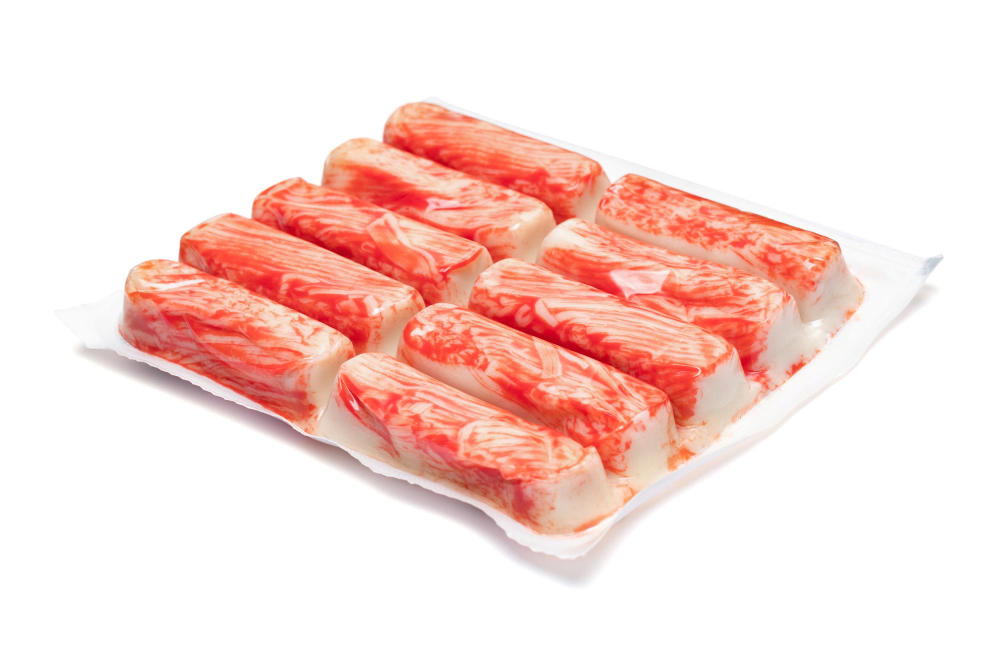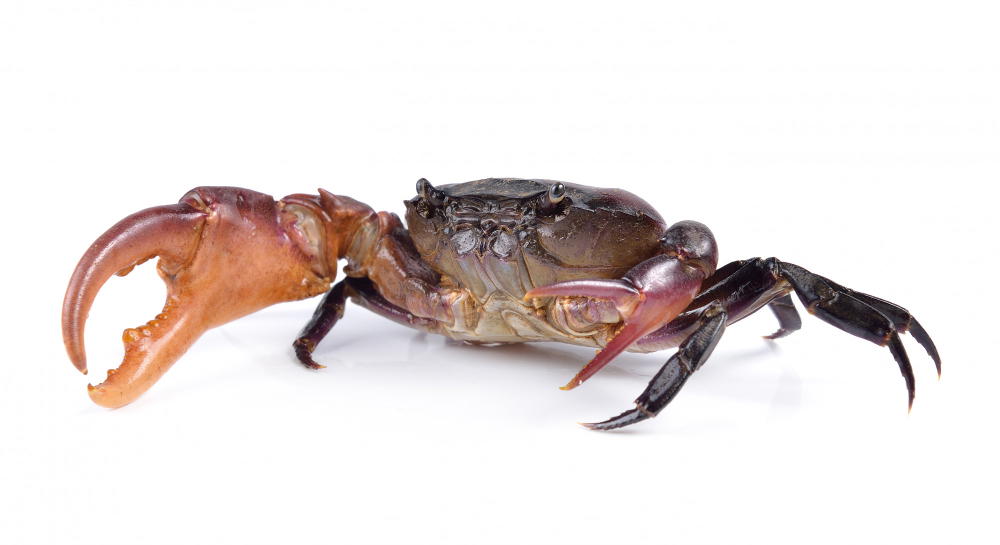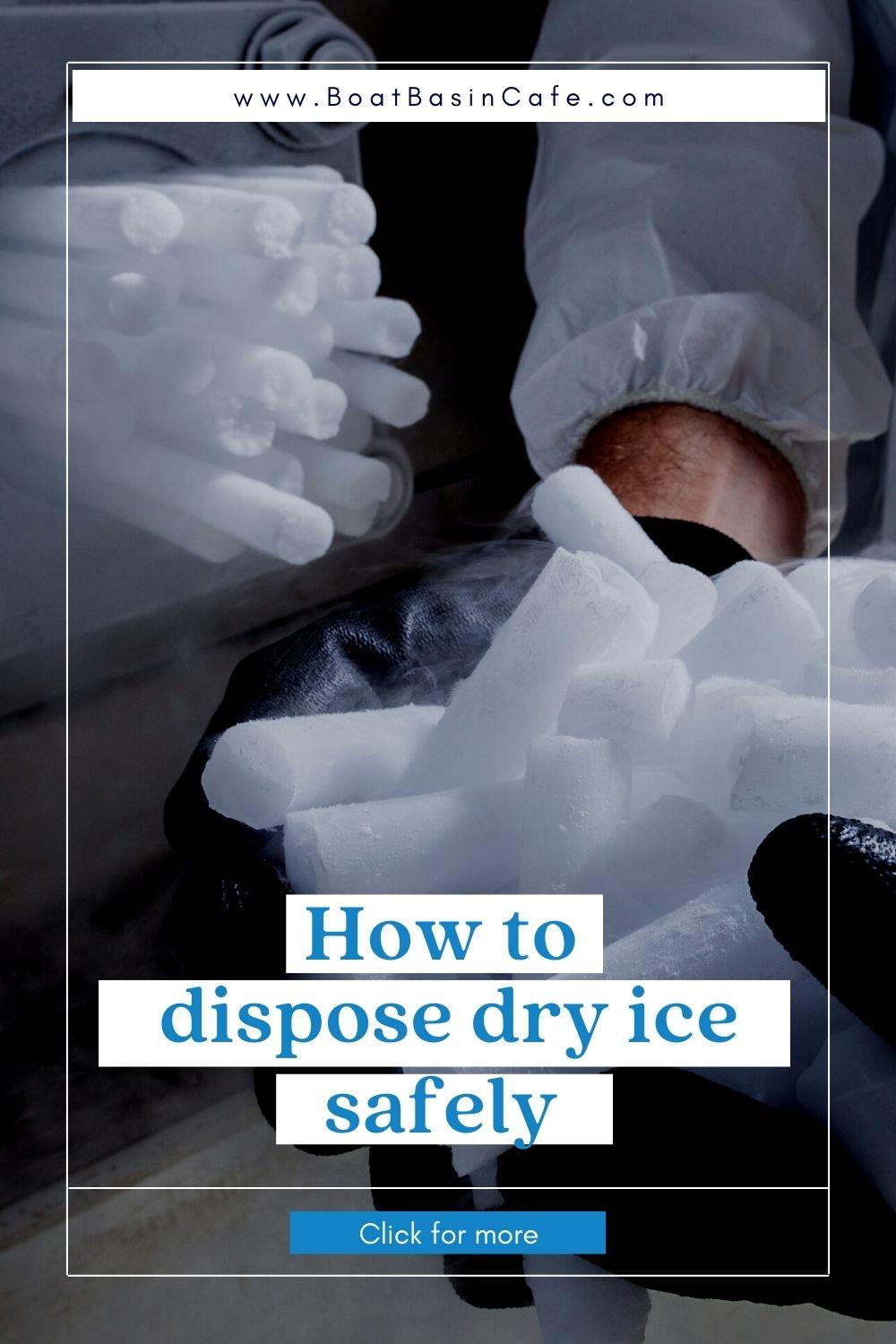The other day I couldn’t help myself from buying a load of fresh crabs straight from the ocean. So when I reached home, my better half got super excited to see all those crabs.
But she baffled me with the question of the hour: “Can you freeze crab meat?”
If you’re anything like us, this guide on how to freeze crab meat will come in handy.
You may also like: Can You Freeze Smoked Salmon?
Let’s dive in!
Nutrition Information of Crab

source: webmd
Health Benefits of Crab

source: webmd
Why Should You Freezing Crab Meat?
Crab meat is highly perishable so it’s best to freeze it instead of refrigerating it.
If you have leftover crab cakes or crab soup or any other crab dish, you can freeze it for later. Refrigerating cooked crab won’t make it last.
Or, if you have too many fresh crabs and don’t know what to do with them, you should freeze them to preserve their taste, color, texture, and freshness and throw a crab party later.
Can You Freeze Crab Meat?

Yes, you can freeze crab meat. But the methods differ depending on whether you want to freeze cooked shelled crab meat or cooked crab meat without shells.
Freezing uncooked crab is a huge no-no. Without cooking it first, you won’t be able to get rid of the possible bacterial growth that may arise from the undigested food the crabs ate. It can lead to food contamination and poisoning.
How to Freeze Cooked Crabs With Shells

To freeze cooked crabs with shells, here’s what you’ll need:
- A large pot for steaming
- A colander for the pot
- A pair of tongs
- Towel
- Kitchen shears
- Mallet
- Salt
- Aluminum foil
- Plastic wrap or cling film
- Freezer bags
- Marker
- Vacuum sealer or straw for removing air
Method:
- Fill ¾th of a large pot with water and add some salt.
- Bring the water to a boil.
- Using a pair of tongs, add the crabs to the boiling water.
- Cook for 25 – 30 minutes.
- Drain the water by putting the crabs in a colander.
- Run the crabs under cold tap water to bring them to room temperature.
- Place the crabs on a clean towel to dry.
- Use the kitchen shears to remove the claws and pointy parts of the crab legs. Otherwise, it will bore holes in the wrapped crab.
- Take the top shell off and wash the inside with cold water.
- Remove the stomach, mouth, flap, and gills and bin them.
- Wrap the whole crabs individually in plastic wrap or cling film.
- Put the crab with shell in a resalable freezer bag.
- Use vacuum sealing to make the bag airtight. Or, use a straw to suck out as much air as you can from the freezer bag.
- Add a sticker to the bag and use a marker to write down the number of crabs and the date of freezing.
- Wrapped crab with aluminum foil and stick it in the freezer.
- Maintain a constant 0° F (-18° C) in the freezer.
How Can You Freeze Cooked Crab Meat Without The Shell?
From the method above, follow the steps 1 through 10.
Then, break the crab legs at the joints and pull them away from the body.
Use your fingers to get the meat out of the crab legs. Then, use a mallet to break the shell and remove the meat from the body and claws.
Now wash the meat in cold tap water, put on a towel to dry, and wrap it with cling film. Put in a freezer bag and either vacuum-seal the bag or get the air out using a straw.
Stick on a label and add the date so that you know when to consume it before it reaches the end date.
Wrap it with aluminum foil and put it in the freezer.
How to Freeze Crab Meat in Milk Without Shell
Another way to freeze crab meat that has already been boiled and is without a shell is to use milk.
- Take a resealable freezer bag and put the crab meat inside.
- Pur whole milk in the bag until all the crab meat is submerged in it.
- Seal the bag without using a vacuum sealer as the milk will need space to expand.
- Store in the freezer for six months.
Although there’s no solid proof that milk does a better job of freezing crab meat than water, there’s a general consensus that milk preserves the taste of frozen crab meat better.
Can You Freeze Live Crabs?

You should never freeze live crabs because even though they are used to living in cold conditions, your freezer conditions are different. They won’t get any oxygen and will die inside the freezer.
Any food that was not digested inside the crab would start to rot, leading to bacterial growth. Plus, crab meat itself will start to rot soon after the crabs die, even inside the freezer.
Taken together, it’s totally unsafe to freeze live crabs. It is sure to give you food poisoning.
Does Freezing Affect the Quality of Crab Meat?
If you follow the instructions properly, freezing won’t affect the quality of crab meat much.
If you don’t use airtight bags to store the frozen crab meat, the freezer air will penetrate and dry out the meat, affecting its texture.
However, the quality of crab meat without shells will take a slight hit. That’s because the shell acts as a protection to keep the meat well-moisturized and tender.
How to Thaw Frozen Crab Meat
You need to thaw frozen crab meat properly to make sure it tastes good when added to a dish.
The key factor when thawing frozen crab meat is to make sure the temperature goes down gradually.
There are two ways to thaw crab meat – either by putting it in a bowl of cold water or placing the bag overnight in the refrigerator.
Submerge the whole bag of frozen crab meat in a bowl of cold water for two hours and change the water after 30 minutes.
Or, leave the bag in the refrigerator overnight for the frozen crab meat to thaw well.
How Long Does Frozen Crab Meat Last in the Freezer vs Refrigerator?
Here’s a quick take on how long frozen crab meat lasts in the freezer vs the refrigerator.
| Frozen | Refrigerated | |
| Cooked crab meat | 3 months | 5 days |
| Boiled or steamed crab meat | 3 to 6 months | 5 – 7 days |
| Cooked crab in shells, crab cakes, and crab casseroles | 3 months | |
| Boiled crab meat without shell and frozen in milk | 6 months | |
| Crab soup | 3 – 4 days | |
| Canned crab meat | 3 months | |
| Opened package of pasteurized crab meat | 2 – 3 days |
Crab Meat Recipes: Crab Cakes and Crab Soup
You can make these easy crab cakes and crab soup with frozen crab meat.
Crab Cakes
Ingredients:
- 1 pound of fresh crab meat
- 8 saltine crackers, finely crushed
- ¼ cup bread crumbs
- Salt to taste
- A pinch of cayenne pepper
- ½ teaspoon Old Bay seasoning
- 1 egg, lightly beaten
- 2 tablespoons mayonnaise
- ½ teaspoon Dijon mustard
- ¼ teaspoon Worcestershire sauce
- 2 tablespoons butter
Method:
- In a mixing bowl, add the crushed saltine biscuits, Dijon mustard, mayonnaise, Worcestershire sauce, salt, cayenne pepper, Old Bay seasoning, and egg.
- Fold the crab meat thoroughly into this mixture and cover the bowl and refrigerate for 1 hour.
- Put bread crumbs on a dry plate.
- Form round patties with the crab meat mixture and roll them in the bread crumb to cover well on all sides.
- On medium heat, melt butter in a pan and shallow fry the crab cakes for about four minutes on each side or until they turn golden brown.
Cream of Crab Soup
Ingredients:
- ¼ pound crab meat
- 4 cups of whole milk
- 2 tablespoons of Sherry
- 1 cup heavy cream
- 1 tablespoon Old Bay seasoning
- ¾ cup all-purpose flour
- ¼ cup onion, finely chopped
- 1 stick of butter
Method:
- In a saucepan, melt the butter over medium heat.
- Sauté the chopped onions until they become soft.
- Add one tablespoon of Old Bay seasoning and stir well.
- Now add the flour and stir everything well.
- Next, add the heavy cream and mix everything together.
- Gradually add the whole milk and keep stirring all the while on a low flame.
- Add the sherry and the crab meat to the thick soup.
Tips on Freezing Crab Meat
- Vacuum sealing bags protect the frozen crab meat and prevent any air from getting in the bag and drying out the meat.
- If you don’t have a vacuum sealer for your freezer bag, use a straw to suck out the air before sealing the bag.
- Keep the freezer temperature at a constant 0°F (-18°C) to keep the frozen crab meat last longer.
- Use layers of cling film, foil, and freezer bags to pack in as much moisture and freshnes.
- To prevent frozen crabs from getting freezer burns, remove the pointy claws so that they don’t tear the freezer bag and expose the crab to the freezer temperature.
- Freezing both cooked and uncooked crab meat in their shells will keep them from losing their natural moisture, tenderness, and flavor.
- If you freeze crab meat on its own without shells or as part of a soup or any dish, it will become too stringy.
- Once you thaw crab meat, use them up instead of refreezing them.
- Never freeze live crabs as that could cause food poisoning.
- Do not thaw frozen crab meat in the microwave oven as it will take the temperature down too quickly, resulting in a loss of taste, flavor, and texture.
Tips on Cooking and Eating Crab Meat
- To thaw frozen crab meat, either leave them overnight in a bowl in the refrigerator or submerge them in cold water.
- When you can smell the crab while cooking, that’s when you know it’s done and shouldn’t be overcooked.
- Drizzle butter over cooked crab meat for the best taste.
- Always add cream to thawed crab soup, never when you freeze it.
Final Thoughts
Crab meat is delicious seafood that has a unique taste and texture. It’s versatile too as you can make flavorful soups with it or use the frozen crab meat to make cakes.
The trick is to know how to properly freeze crab meat the right way after cooking it. You can choose to freeze whole crabs with shells or freeze only the meat.
With the detailed instructions covered in this post, you’ll never have a bad experience of freezing and thawing crab meat.
FAQs
01. What is the best way to freeze crab meat?
The best way to freeze crab meat is to boil the crabs with the shell, drain the water, and pack them individually in plastic wrap, a freezer bag, and aluminum foil.
02. Can you freeze crab cakes?
Yes, you can freeze crab cakes, either cooked or uncooked.
For freezing cooked crab cakes, let them cool down to room temperature after you have cooked them. Then wrap them individually in cling film or foil and place them in a freezer bag for storing in the freezer.
If you want to freeze raw or uncooked crab cakes, place them in a single layer on a baking sheet covered with parchment paper. Then freeze them for 2 hours without covering them.
After 2 hours, wrap them individually in plastic wrap and put them in a sealable freezer bag before putting them away in the freezer.
03. Can you freeze crab soup?
Yes, after making the crab soup, bring it down to room temperature before putting it away in an airtight container in the freezer.
When you’re ready to have the soup, allow it to thaw, and then put it in a pan on the stove over a low flame to heat it through evenly.
04. Can you freeze lump crab meat?
Yes, you can freeze lump crab meat in the same way as you would freeze normal crab meat – after washing, boiling, and putting it away in airtight freezer bags.
05. Can you freeze canned crab meat?
Yes, you can freeze canned crab meat in its original can. However, if you have already opened the can but still want to freeze the crab meat, put the meat in an airtight container or freezer bag and fill it with milk before stashing it in the freezer.
06. Where to buy frozen crab meat?
You can buy frozen crab meat from any online store.
07. Can you freeze imitation crab meat?
Imitation crab meat doesn’t contain any crab and is a mix of different types of fish, starch, and flavor.
It’s not recommended to freeze imitation crab meat because it had already been frozen once at least before it reached you.
Pin Later





